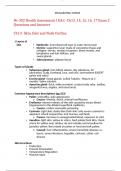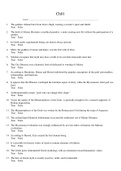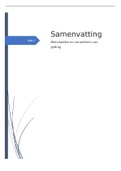Exam (elaborations)
Nr-302 Health Assessment I HA1- Ch 13, 14, 15, 16, 17 Exam 2 Questions and Answers,100% CORRECT
- Course
- NR-302 Health Assessment
- Institution
- Chamberlain College Of Nursing
Ch13- Skin, Hair and Nails Outline CH. 14 HEAD, FACE, NECK, and REGIONAL LYMPHATICS Ch. 15 Eyes CH. 16 EARS CH.17 NOSE, MOUTH, AND THROAT
[Show more]












